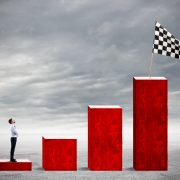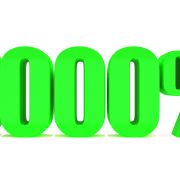Annual U.S. federal government expenditures can be measured somewhere north of four or five trillion. On the other hand, politicians in Yemen spend somewhere in the range of $5 billion. What’s going on?
Are we to assume Yemen’s political leadership is particularly parsimonious with taxpayer money? And is the low level of government spending there the reason for the country’s history of extreme poverty?
To read New York Times reporters Ben Casselman and Jim Tankersley, someone lacking the most basic of economic knowledge might assume the latter. Based on what Casselman and Tankersley imagine powers country economic growth, one would perhaps conclude that Yemen’s problem is a stingy central government. If the politicians there would just tax and subsequently spend more, the economy would boom.
Casselman and Tankersley recently authored a front page story that led with the headline “Without Stimulus, Dire Outlook for the Economy.” Translated for readers who are still asleep, the U.S. economy will implode unless Congress extracts trillions from the private sector, only to write checks with it and spend it on favored projects. Weak economy? Just expand the footprint of Congress. You can’t make this up.
It’s plainly lost on the two reporters that what they imagine to be stimulus is in fact a consequence of growth. Growth that already happened.
Casselman and Tankersley believe the U.S. economy can’t survive sans excess government spending, but the actual truth is that there’s no government spending without economic growth first. Think about it. Then think about it some more. What you read in the newspapers and what economists tell you is backwards.
Government spending is what comes after economic growth. It’s logically not a driver of it. Politicians spend less in Yemen than do U.S. politicians not because they’re thrifty with the money of others, or because Mises’s classic book Socialismnever leaves their sides, or because they think Keynes’s General Theory was bunk. They spend very little precisely because there’s very little economic growth in Yemen to tax or borrow against.
Economic growth, then government spending. Economic growth, then wasteful spending that journalists and economists naively refer to as “stimulus.” The headline for the piece by Casselman and Tankerseley was incorrect because their analysis was. “Stimulus” can’t enhance the U.S. economic outlook simply because stimulus is only possible insofar as the U.S. economic outlook has long been enhanced. Most dynamic in the world enhanced.
It’s all a reminder that the New York Times is not “fake news.” Not at all. It’s the best source of information in the world. More realistically, the Times is the best example of what news is when the reporters of it are highly emotional people. When the economy is weak it just seems so simple to say that government should hand out the money of others to get it moving again. Except that governments can only “stimulate” the depressed if they’re depressing the stimulated. It gets worse.
You see, the emotional also believe consumption drives economic growth. It just seems like it’s true. If we buy things, the economy will boom.
Actually, buying is the easy part. What’s more of a challenge is producing so that we can buy things. The latter requires investment. Investment renders us more productive, and thus more capable of buying things.
Which speaks to the bigger problem of government spending. In order to dole out trillions, the feds extract funds from those with means; as in the very individuals most capable of investing what’s left over after they consume. This explains why government spending is much more hazardous than it stimulating the depressed through depression of the stimulated. In truth, government spending is all about depressing those most capable of stimulating, which is always and everywhere a consequence of investment.
Bringing it back to Casselman and Tankersley, it’s lost on them that absent panicky politicians responding to a virus with lockdowns of economic activity, the U.S. economy wouldn’t presently be so weak. Translated for those a little bit slow on the uptake, the Times reporters believe the very political class that helped depress the economy should be empowered to centrally plan its revival.
That the revival plan constructed by politicians and cheered by Casselman and Tankersley amounts to politicians passing around the trillions of others just adds to the Twilight Zone nature of today’s economic discussion. The economy is weak, so hand trillions to Nancy Pelosi and Mitch McConnell to revive it with.
Implicit in the droolings of reporters and the politicians they lionize is that the second half of the 20th century was just a bad dream, as opposed to a tragic stretch of decades in which politicians arrogated to themselves control over the means of production on the way to a body count of over 100 million. In reality, the 20thcentury’s 2nd half was real. And it was awful for those who suffered a massively expanded political footprint.
Looked at through a modern-day lens, what didn’t work in total doesn’t work partially. Untaxed and unspent wealth doesn’t sit idle as Casselman and Tankersley’s emotions tell them; rather it’s directed to its highest perceived use by profit-motivated investors. You don’t grow a weak economy through increased central planning.
Casselman and Tankerseley believe government spending is necessary to revive a gasping economy. No, that’s not serious. Government spending is the often wasteful result of a booming economy. More of it now will slow today’s nascent recovery. If readers are still confused, just check out Yemen.













